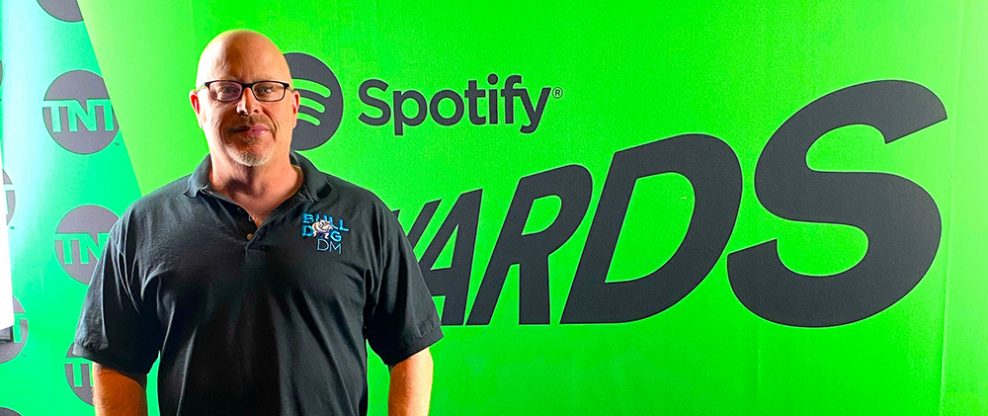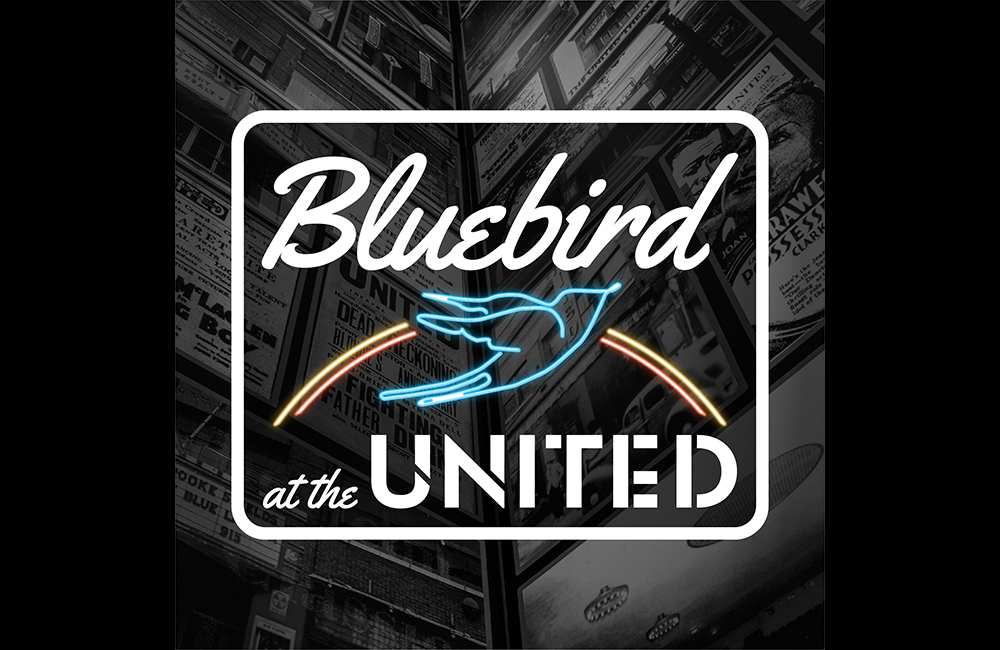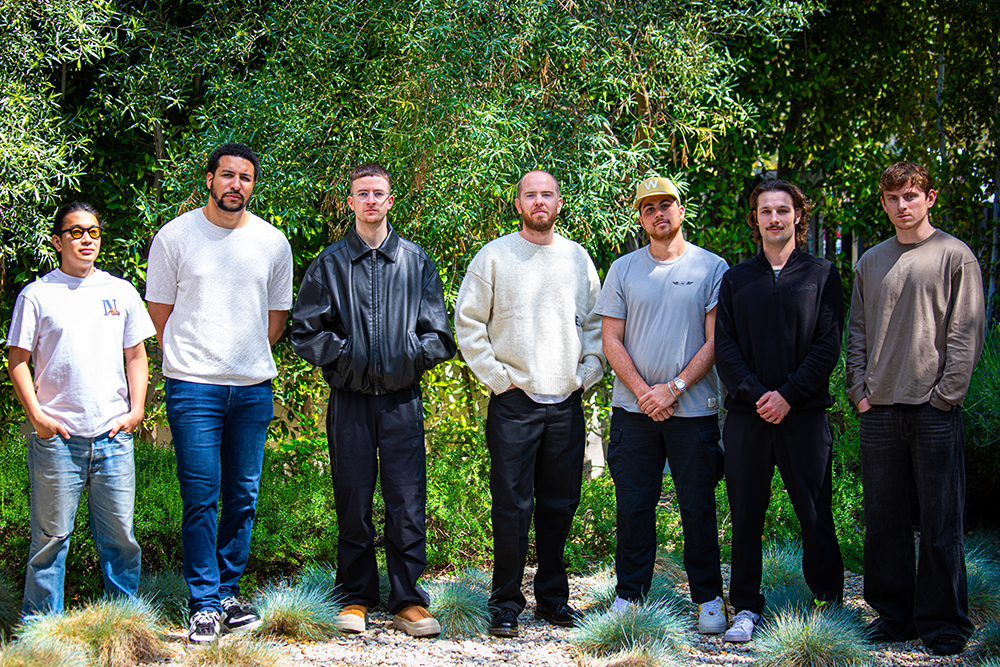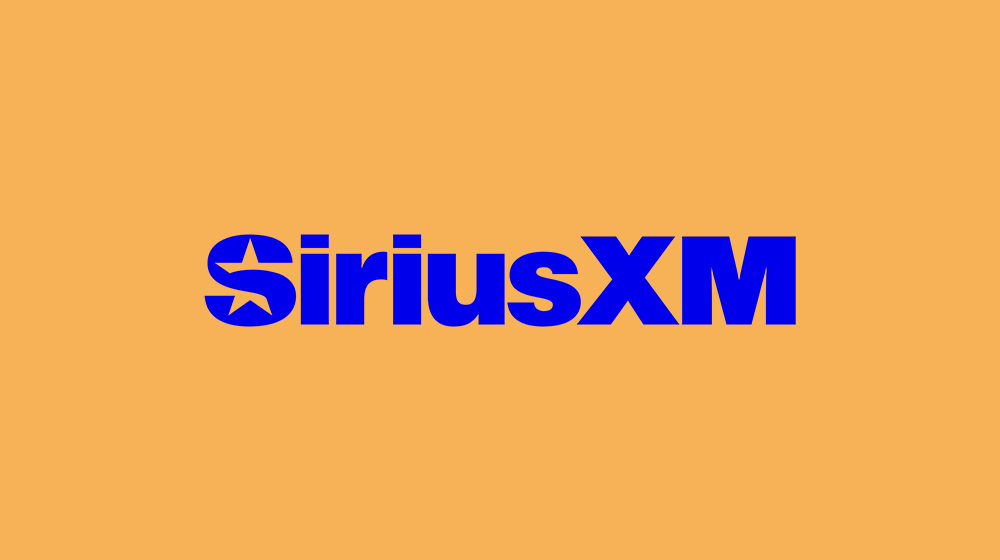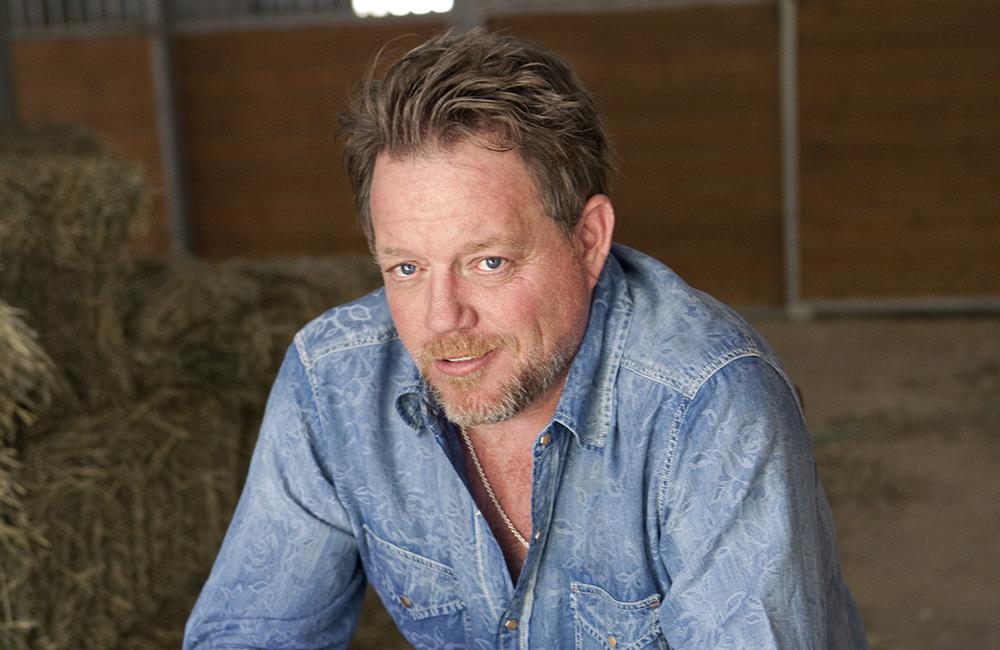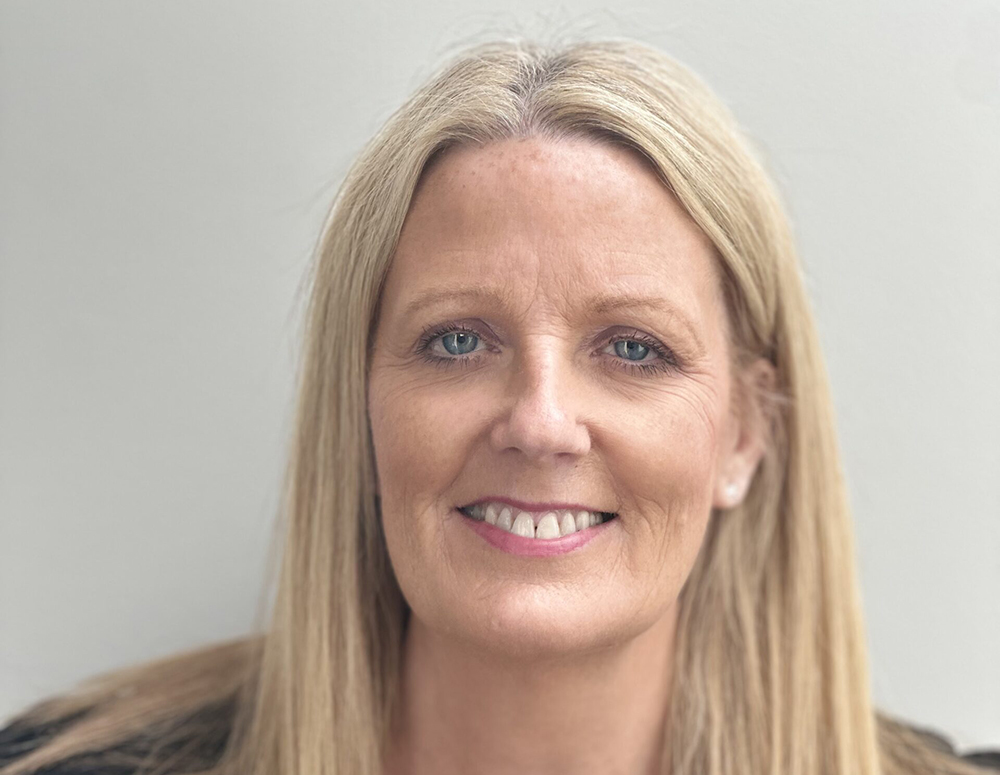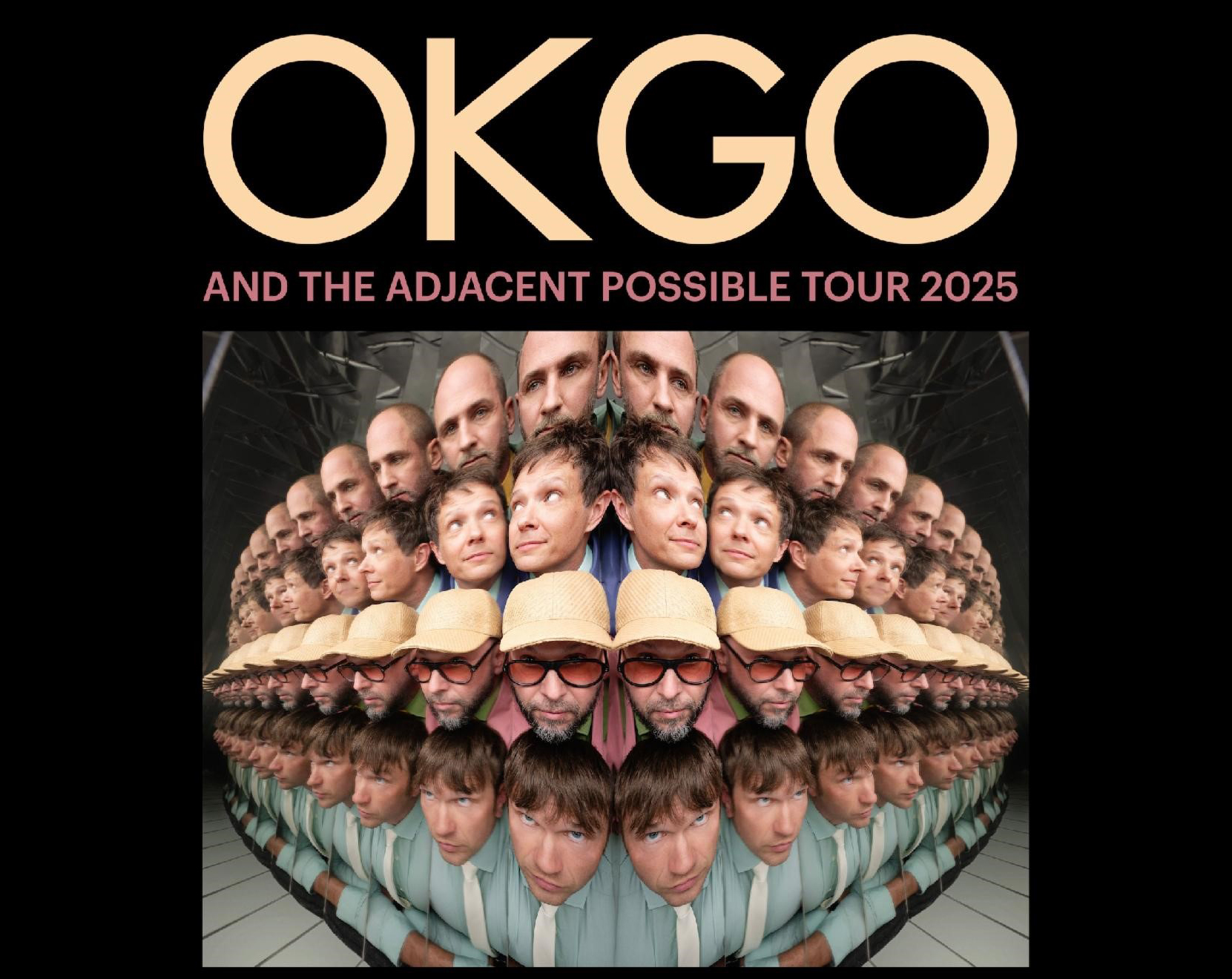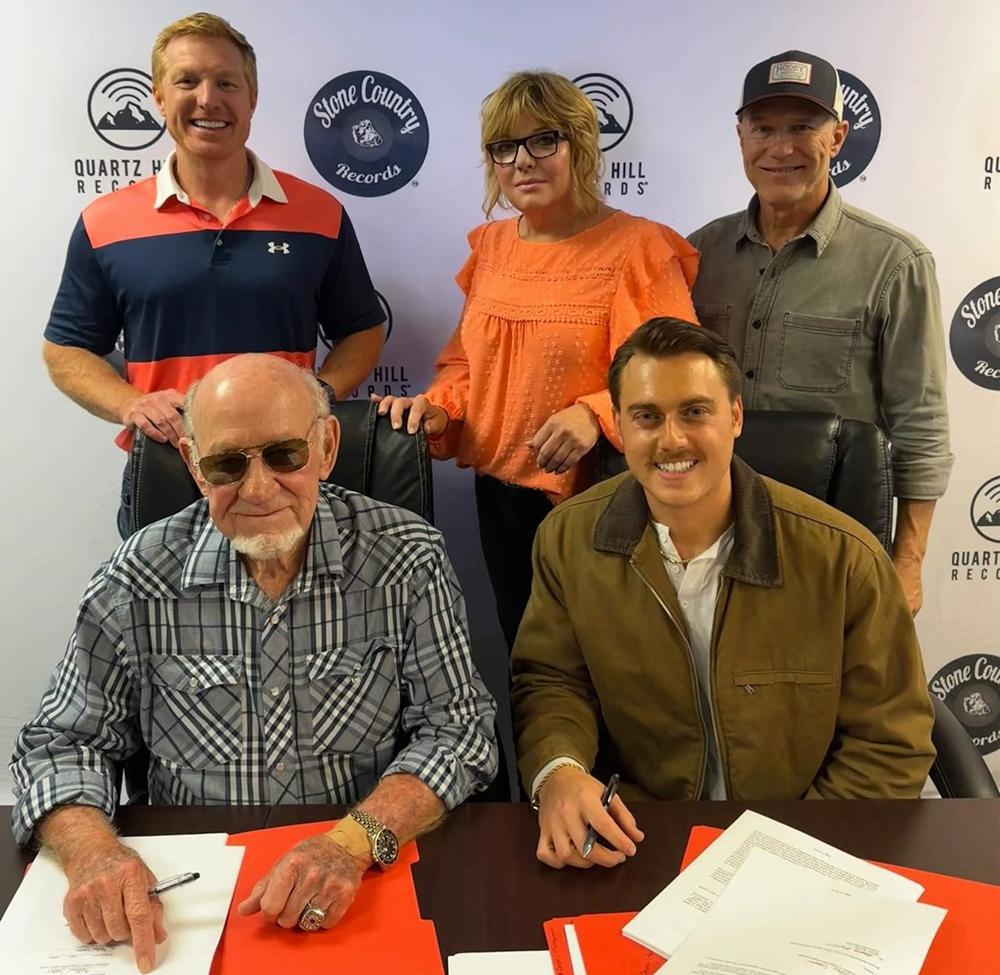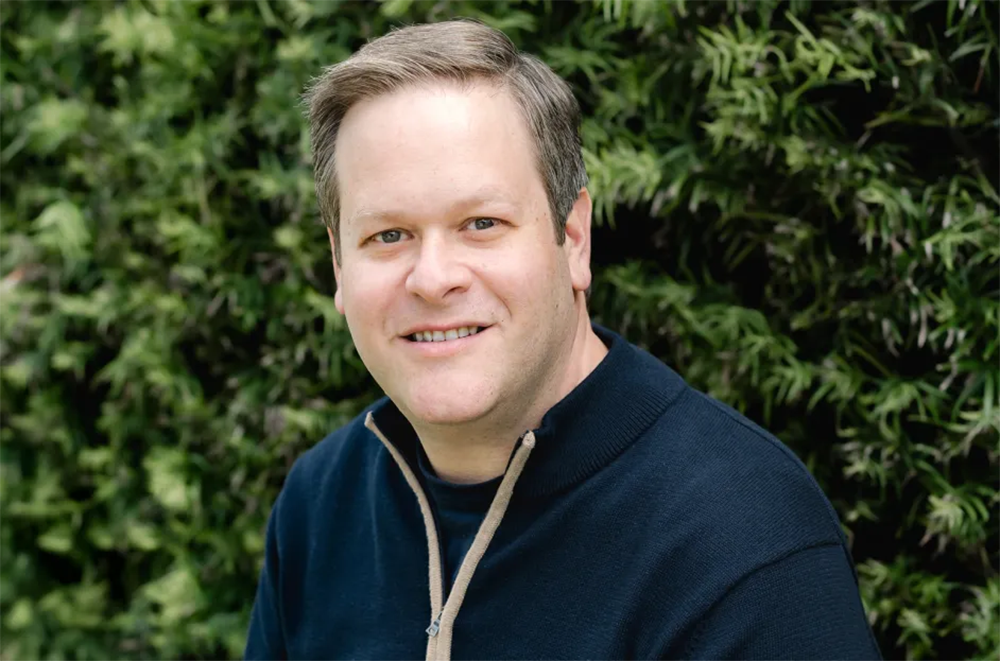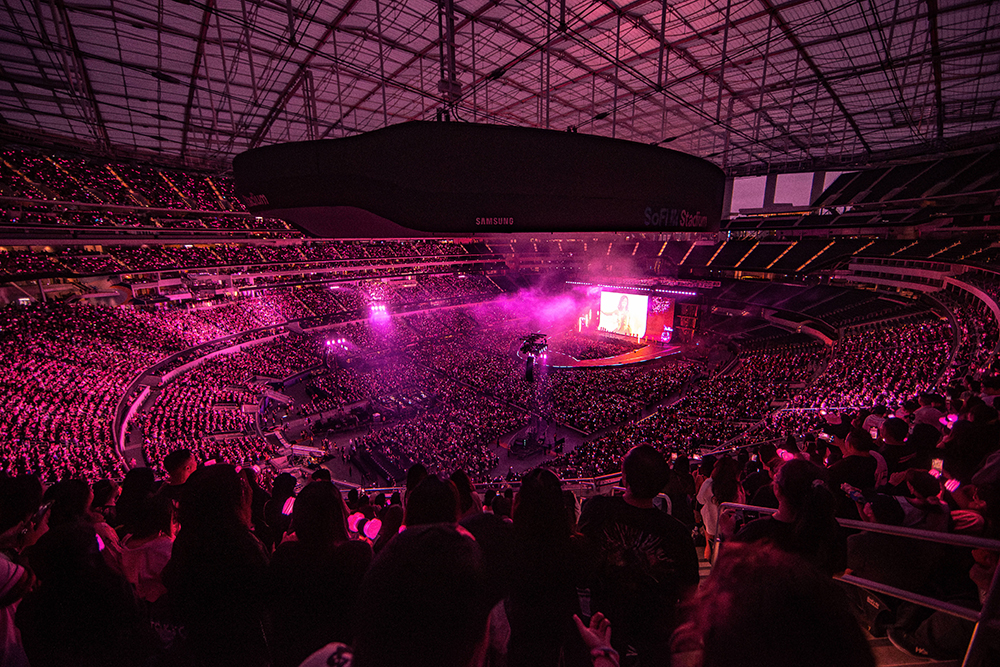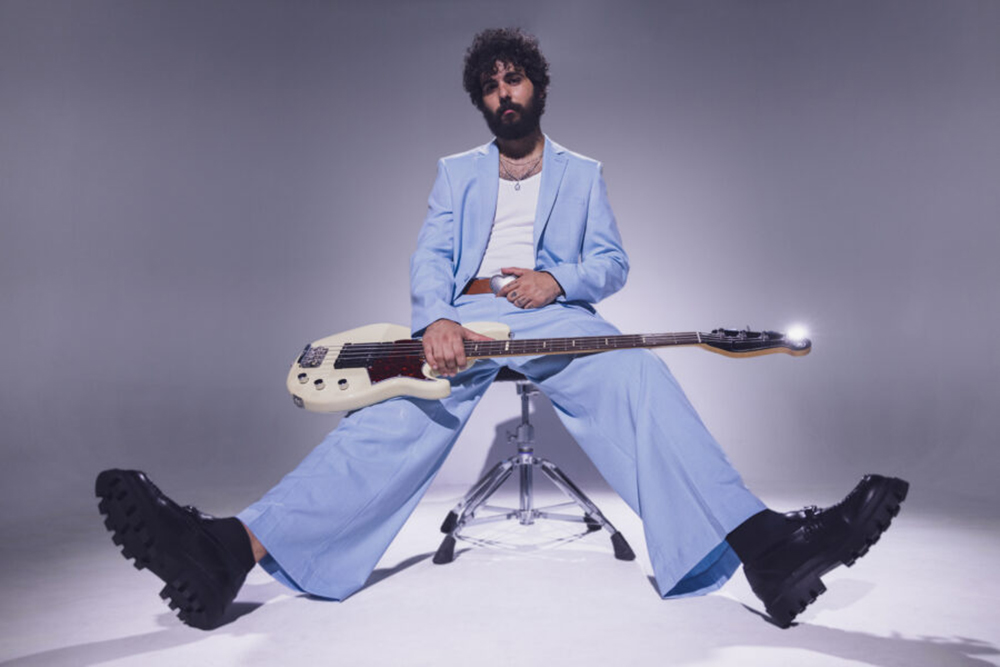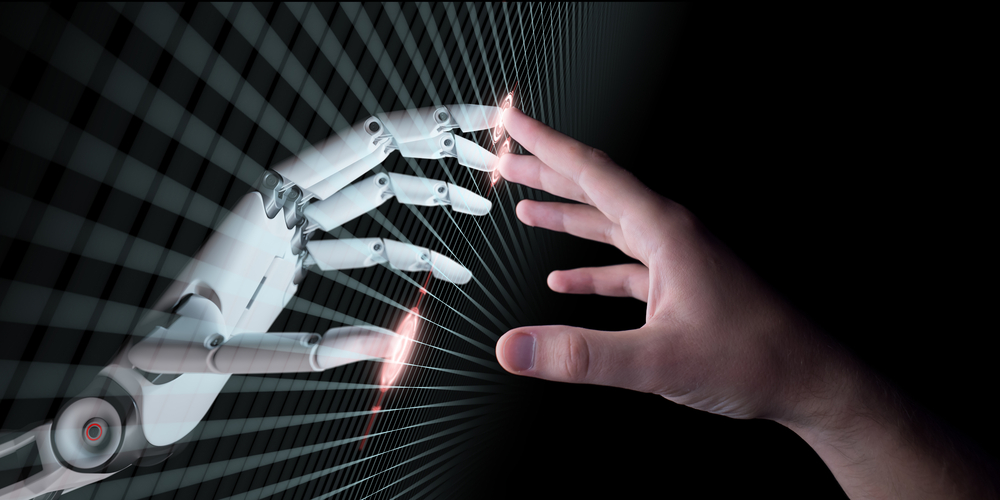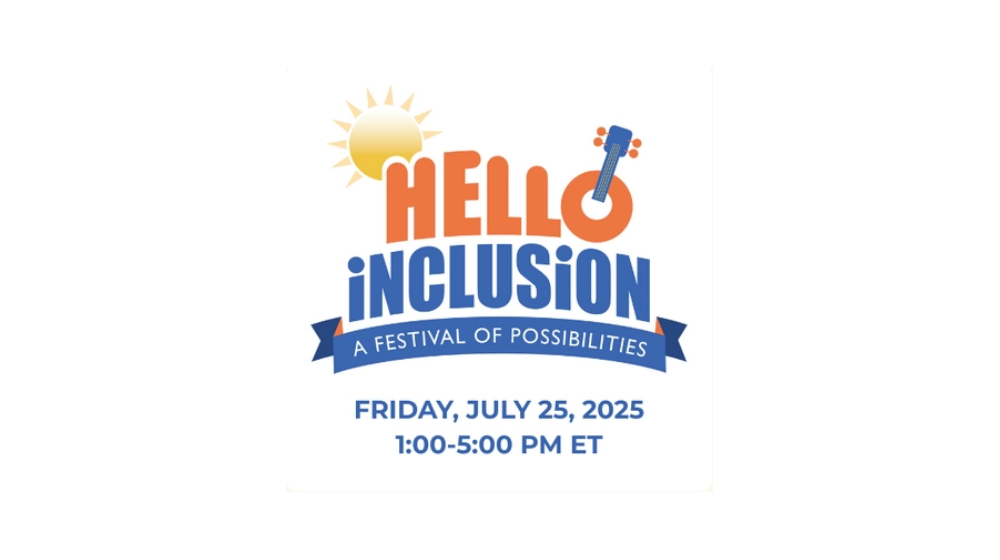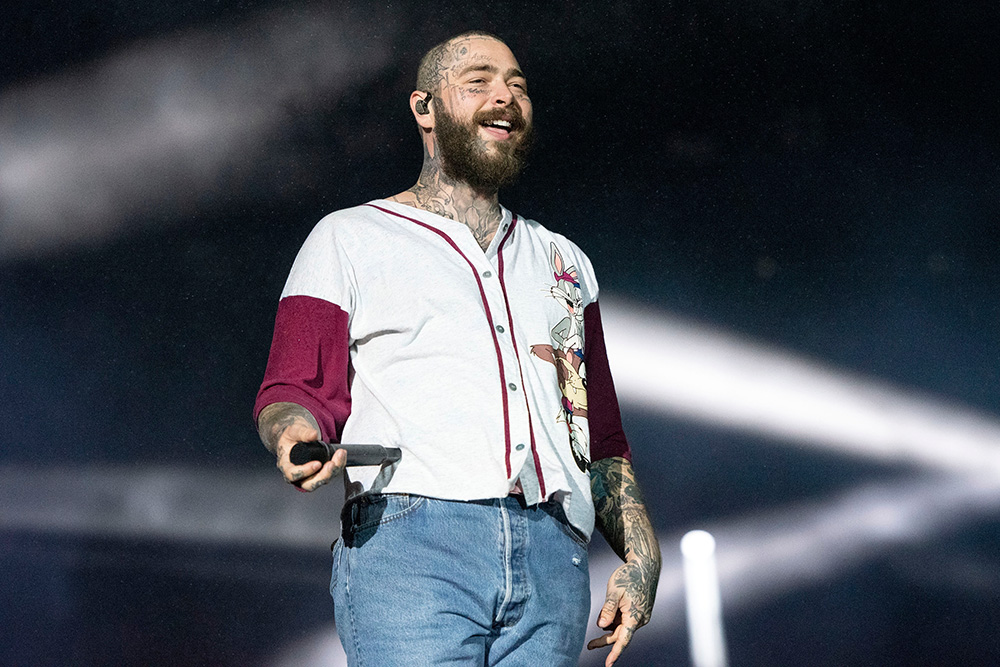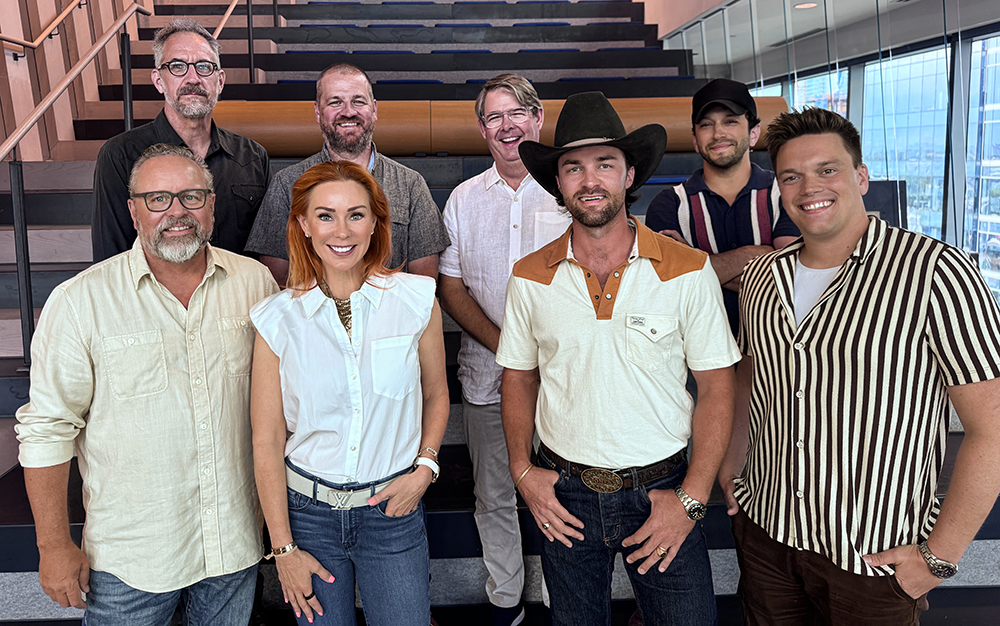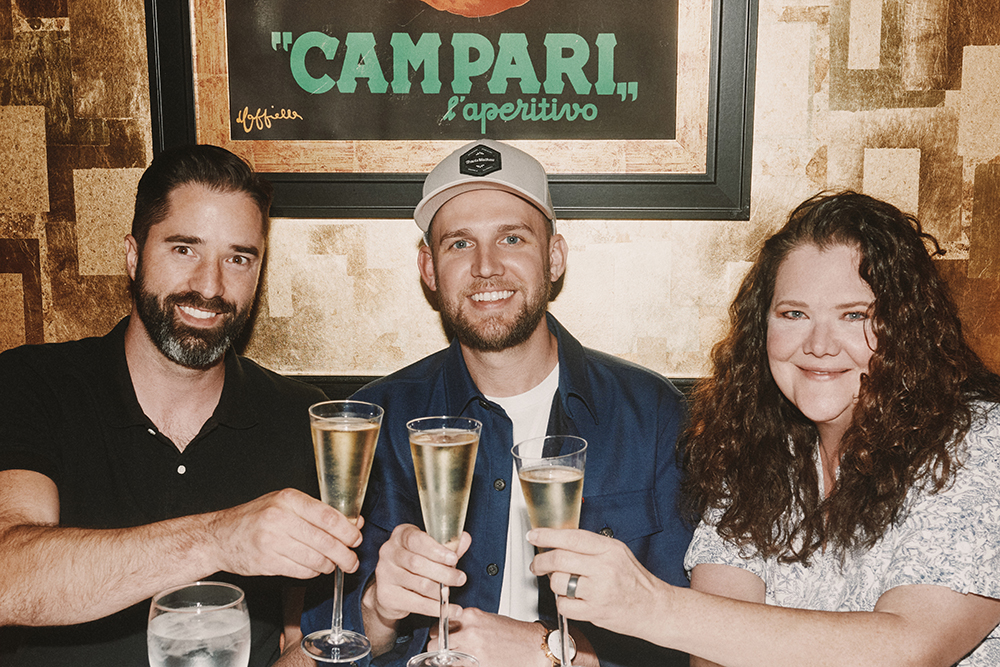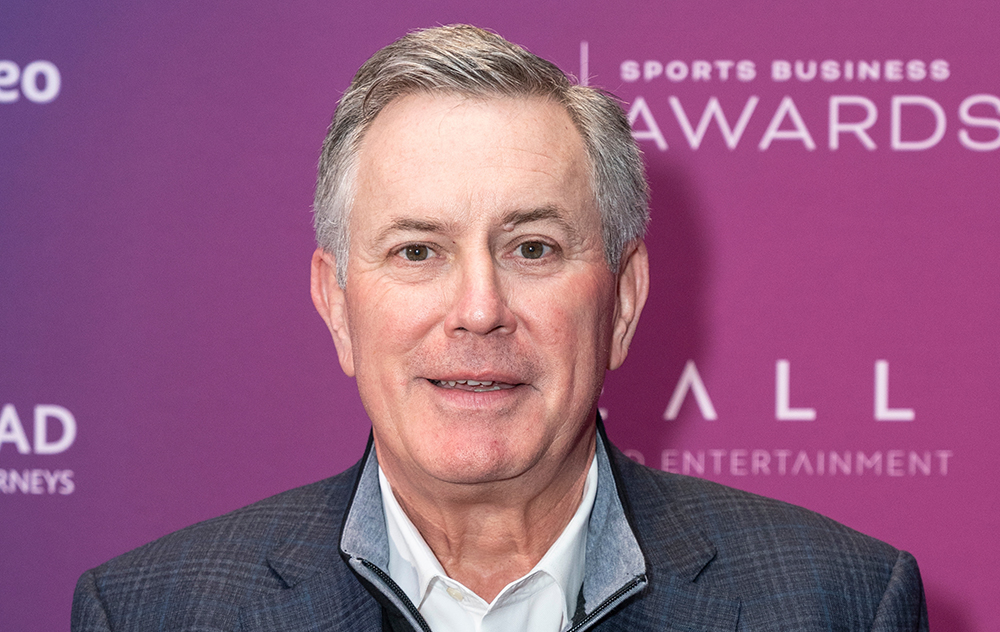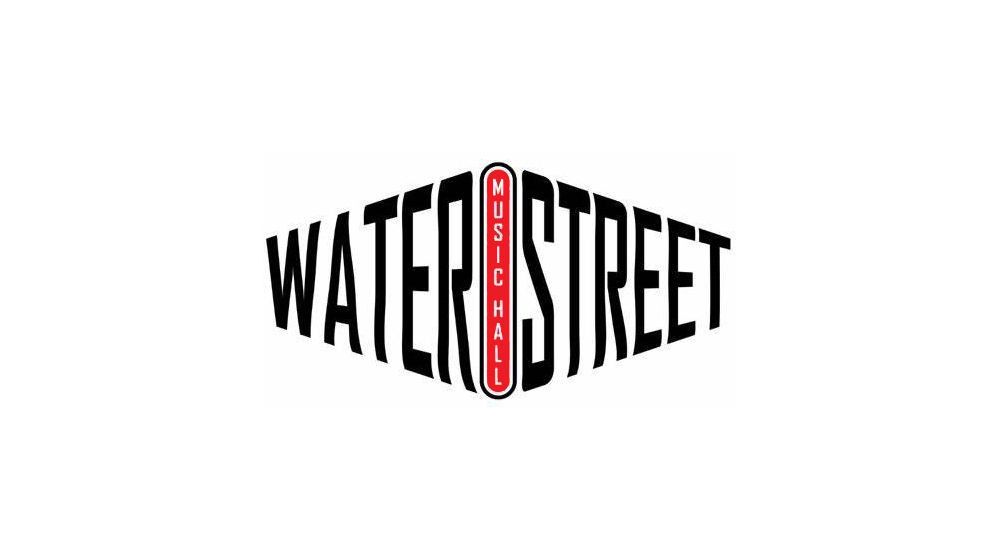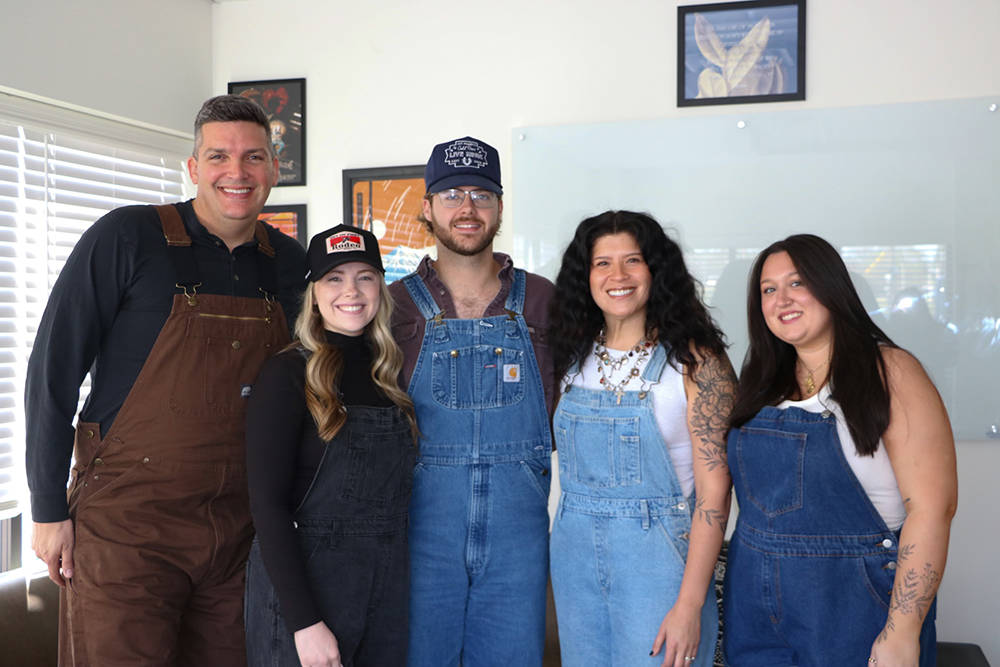This week In the Hot Seat with Larry LeBlanc: John Petrocelli, CEO/Founder Bulldog DM.
Bulldog DM CEO John Petrocelli knows more about what’s on your smartphone than you do.
Arguably, some of the video content on your smartphone, Petrocelli either supervised its production or oversaw its distribution through his Los Angeles-based company Bulldog DM which launched in 2012.
Bulldog DM, providing turnkey enablement of premium live-streamed experiences, is one of America’s most ubiquitous live streaming firms. The company helps brands, agencies, content owners, and platforms deliver live video content on YouTube, Facebook, Twitter, Twitch, Instagram, and LinkedIn, as well as developing branded microsites.
Bulldog DM’s work and client roster has included: Spotify, AT&T, Apple, Samsung, Netflix, Coca-Cola, Facebook, Hyundai, Nissan, American Express, Sony, Jeep, the NFL, Nestlé Snickers, YouTube, Taco Bell, Converse, Delta, and Hilton.
Petrocelli himself has also been instrumental in helping companies establish optimal strategies to distribute and monetize their video content for over 20 years, working with the likes of the NBA, NHL, NBC, Disney, YouTube, VEVO, Twitter, Universal Music Group, and Microsoft.
Previously, Petrocelli was VP, Sales, and Business Dev at AEG Digital Media after selling a small streaming media services company Incited Media to AEG to form AEG Digital Media.
As the live streaming market further developed, Petrocelli realized there was a real opportunity for himself, and he launched Bulldog DM with several key team members from AEG Digital Media.
Still, even three years ago, live streaming was primarily the realm of online gamers and influencers—but the global disruption of the COVID-19 pandemic has elevated live streaming within the mainstream, as artists continually now broadcast on Instagram, Twitter, YouTube, Facebook, Twitch, and other platforms.
Brand sponsored and presented live streams, especially of media, music, and entertainment experiences, will no doubt become an ongoing component of our culture when life returns in full force.
Bulldog DM is well-positioned to help brands and artists alike pivot from live events to an in venue audience to executing live-streamed virtual experiences for a national or global audience.
Being an entrepreneur in the technology sector must be challenging.
That is an understatement. It has been eye-opening for me. Fortunately, there’s a lot of information out there, and it’s free. You can listen to a TED talk. I got into streaming because I saw what Mark Cuban had done with taking his internet audio network, broadcast.com, and turning it around and selling it to Yahoo! for so much money (netting over $1 billion). And I read his (2011) book, (“How to Win at the Sport of Business: If I Can Do It, You Can Do It”), and also consumed his interviews and comments as much as possible. His whole thing is that without customers, no matter what kind of technology you have, you are not going to be successful. If there are no sales, there’s no company.
It takes will power, and sheer guts to work in the live streaming sector. You’d have to have nerves of steel.
It’s definitely not easy. It also can be fun. You have setbacks and challenges, and you also have great days. In retrospect, it has been great to have started a company earlier, but it’s not for the faint of heart. It’s not easy. I’m self-financed. I don’t have any investors.
You have an impressive client list.
We keep trying to explain technology so everybody can understand it because, especially in the music business, people have day jobs. They are performing or they are managing or they are agenting.
They don’t have time to sit down, and talk about compression algorithms and embed codes. They just want to know that you can help them achieve what their goals are. We exist to do that, and we talk in terms that everybody gets, and understands.
What staff do you have?
We have a core group of four or five people, and when there’s a big project, especially when video is involved, we can expand up to 30 people, depending on the scope.
The game-changer for streaming, social networking, and web surfing was the advent of the smartphone. Today, with a smartphone, music fans can listen to music and watch video content from around the world. Demand for greater mobile music experiences, in particular with music, is driving our culture. Earlier video content wasn’t that great on smartphones but today you can push videos, photos, and music content from mobile devices to friends and family anywhere in the world
The smartphone completely changed streaming video and the live streaming industry. This industry was actually known for its failures when it first started. You might recall the live stream of the Victoria’s Secret’s Fashion Show that crashed the internet or what happened when Oprah (Winfrey) did a big variety telethon.
(In 1999, during Super Bowl XXXIII, Victoria’s Secret announced in a 30 second $1.5 million ad, a 72-hour countdown to the Internet webcast of its first-ever live online fashion show, and then spent an additional $4 million on international newspaper publicity which resulted in 1.5 million internet viewers via broadcast.com. Due to slowdowns and bottlenecks, some viewers were unable to see such supermodels as Tyra Banks, Laetitia Casta, Heidi Klum, Karen Mulder, Daniela Peštová, and Inés Rivero strut down the catwalk. But he site “never went down,” according to IBM Global Services, which provided web hosting and electronic-commerce software for the site.)
In the late ‘90s, a live stream was a slide show on your device. You were lucky to get past the buffering, and the underperformance. That changed as broadband propagated, but the real change was the growth of the connected device market led by the smartphone. In this part of the world, definitely the iPhone, and the ability to play, and then adaptive (bit rate) streaming, where we kind of measure what is happening with your device, and your connection and deliver chunks of video to your phone based on your connectivity, that moved the industry forward again fueled by the rise of the experience economy. Millennials prioritizing going to a show versus buying a house or buying a watch or a car. That to me was…you talk about a perfect storm. It was the growth of the device industry led by the smartphone combined with this massive focus on experiences. That’s when we started to see a change.
In late 2015, mobile web traffic surpassed desktop for the first time. Since then, we’ve been living in a mobile world, and mobile device usage has skyrocketed. In 2019, mobile devices accounted for approximately half of Internet traffic across the globe. Mobile devices are not only our leading consumption device but are also the most personal devices we use. Mobile is our first consumption.
Without question.
According to Stockhouse Publishing, based on studies on 2015-2019, the global 5G technology market will reach $388.82 billion by 2030, growing by 57.1% annually over 2020-2030 despite the impact of COVID-19. So it’s a new game due to the smartphone, connectivity, and bandwidth.
It sure is.
A handful of live entertainment agencies and promoters, including AEG, CAA, ICM, Live Nation, Paradigm, and UTA, have banded together to form a task force to strategize and coordinate a unified response to the COVID-19 pandemic, and its on-going impact on the live music business. Given the potential for a new virtual concert value chain emerging in the future this task force is still more traditional thinking because there’s nobody from the technology sector onboard.
Yeah, good point. Good point. I started 6 months ago trying to have calls with the music management people, and artists directly. We’ve been having calls with them about live streaming, why it might be important to them, best practices, etc. That obviously escalated with the pandemic. I have a bit a pedigree that they react to very favorably because I worked with Prince. I helped him build the first direct-to-consumer digital download store and ticketing platform.
Few seem to know anything more than the sheer basics of technology and live streaming whereas you have spent nearly two decades in the field. You and only a handful of other technology-based executives understand that, while streaming was surging in the past 2 to 3 years, the COVID-19 pandemic has created a perfect storm for live streaming opportunities.
With the CO-VID 19 pandemic, and with live streaming from artists in homes, studios, and small venues skyrocketing, new consumers have begun to enjoy live content.
A perfect storm?
It is. You have really described it to a T. There’s a lot of noise in the space right now. It is super popular. I wish it was for better reasons, but you definitely described it accurately.
As far as entertainment businesses go, the live music sector has taken among the heaviest beatings from the COVID-19 pandemic, with some experts predicting that it will be at least 18 months before concerts and other stage performances return to something resembling normalcy. When that happens, we will surely see the introduction of well-orchestrated digital and physical events. Artists providing a live performance coupled with high-level, gated interactive streaming content. A blended experience, but nevertheless the live streaming component has to embrace collaboration and participation. If you get participation in streaming, you can keep the eyeballs a lot longer.
I couldn’t agree more. Everybody in the last 60 to 90 days has live-streamed something. Literally everybody. So you have got this kind of learned behavior. And I have always evangelized, even when I was at AEG I would say, “Stream the first day of the tour. All you are going to do is sell more tickets. Or if you are not comfortable with that”—and obviously old school promoters everywhere, and at AEG as well, would stream the last day of the tour—“give that to the fans because people (artists) are only going to perform on a certain leg. They are going to do a North American leg one year, and take a year off and go to Europe the following year. They can’t be everywhere.” That to me would be a great advertisement. I remember years ago, (Live Nation Entertainment CEO) Michael Rapino announced this partnership with Vice. He was going to put some live concerts on the Vice platform. He was on MSNBC or CNBC and the first question that they asked him was, “Michael aren’t you going to cannibalize ticket sales. His response was, “It’s just the opposite. The more live video and live streams that I serve, the more ticket inventory that I move.” And to me that is…
The show is the show. It happened. You aren’t going to cannibalize it. It already happened.
Exactly.
I remember Migratory Music Ian Murray’s Ovation Towers kiosks in Los Angeles offering live recordings of show that fans could take home, recorded on two Pro Tool rigs. Five 42” screens, mounted vertically forming a video wall, in the lobby advertised that the show fans were seeing could be purchased on their way out the door. Or they could purchase it, and plug in their iPhone as they left. The resistance from artists was incredible. They didn’t want their shows recorded. Meanwhile, audiences were holding up their iPhones the entire evening and recording. On the other hand, Metallica later pioneered the recording of concerts so fans could buy full shows from their website.
I went to a show and I bought the wristband on the way out.
We’re now seeing artists broadcasting around the clock on Instagram, Twitter, YouTube, Facebook, and Twitch. So many artists are trying to build up audiences by just throwing up random streams. Artists are still largely in the dark about the opportunities available with online presentations. Still, live streaming isn’t monetized. Artists are mostly performing for free to gain exposure. They haven’t yet come to grips with the monetary opportunities.
The number of people in the U.S. watching live streams on Facebook has increased by 50% since January, and Twitch users consumed a record 1.1 billion hours of live streams in March.
Mark Zuckerberg recently announced enhancements in the live streaming capabilities of both Facebook and Instagram citing that 800 million people are watching live streams on Facebook and Instagram every day.
Meanwhile, Travis Scott’s three-day Astronomical concert on Fortnite that began April 23rd was a spectacular success. Teamed up with Epic Games for the in-game experience which featured a virtual version of the rapper and performances of “Room,” “Goosebumps” and “Sicko Mode” and culminated with a premiere of “The Scotts,” with Cudi, the event was viewed by more than 12 million people.
So how do we monetize live streaming? Is that not what is on everybody’s mind right now.
Without question. It definitely is. They are trying to replace touring and festivals. Doing live shows for free on the internet, initially, there were some great performances and intrigue around it, but people are now wondering how are we going to replace this revenue. That is a big question for sure.
Due to the internet-driven disruption in music for the past two decades, and now with the pandemic, music industry promoters, managers, agents, and artists are more cognizant of many of these technology challenges and opportunities. In the past, their stance was, “Look, we put on concerts. That is what we understand. We put people in seats, and we sell them food and drink and a great music experience.” Did you not find with legacy media people that it took a long time to drag them into accepting a change to that thinking?
Oh yeah, I’ve been doing this for over 20 years. It’s been a long time coming. It’s exciting now that it’s at the forefront of everything. You can’t escape it. But it’s not under the best of circumstances, but legacy media people are going to hang onto whatever they are going to hang onto for a long as they can hang on. In some ways, I kind of understand it, but they are missing the bigger picture. I tell people in the music business, “You should live stream everything that you do.” If you just saw the battles on Verzuz like Jill Scott versus Erykah Badu.
Oh yes, as many as 710,000 people have tuned in to watch these DJ-like Instagram Live event bouts curated by Timbaland and Swizz Beatz. There’s been two 10-song, three-hour sessions with The-Dream vs. Sean Garrett; French Montana vs. Tory Lanez; Mannie Fresh vs. Scott Storch; Boi-1da vs. Hit-Boy; Ne-Yo vs. Johntá Austin; Lil Jon vs. T-Pain; two rounds of Babyface vs. Teddy Riley; RZA vs. DJ Premier; Ludacris vs. Nelly; and Jagged Edge against 112. As you know artists play signature songs and tracks that they are associated with, whether as producers, songwriters, remixers, or performers.
The big takeaway for me with Jill Scott versus Erykah Badu was that in the next three days their streams on all of the aggregated platforms, Spotify, Apple, etc., tripled. That is money ultimately going back to the artists or the rights holders. But with live video, the discovery that happens in live streaming is immense. It is very impactful, very powerful. Not only for recorded music, but it could be for merchandise. It could be for future ticket sales. There is no substitute for being at a show; even though I’m in the streaming business, and we try to make it the next best thing; but theoretically, it’s only an advertisement to come, and see this artist when they are in your city; or maybe book a trip and go and see them on a tour or at a festival. That is one of the powers of this medium for sure. When I saw that data point—and granted people are sequestered at home, and they are going to consume as much media as they can—that is still a great example of the discovery factor that emanates from a live stream.
It’s hard to fully shake people out of a traditional way of thinking. An older generation in the industry tends to look at live streaming as a television feed. Run the program once or twice, and then archive it. Streaming live content has far more potential including being a content strategy that offers multiple windows. I’m impressed that you encourage your clients to engage in streaming live content with a three-phase strategy.
Part of our best practices, we emphasize those three phases. There’s live live; the actual real-time experience. Then there’s the replay. So if people are in another time zone or other territories, and they missed it, they can have this replay that can go on for one, two, or three sessions. It can go on for a day. It can go one for three days. It’s up to the content creator. Then the third phase is the video-on-demand. Highlights, segments, and bits which could also be a lot the experiential, the interviews, backstage, fan perspective, artist perspective. Once the live show is executed, funded, and produced you do have those three windows.
Nevertheless, so many content creators continue to be linear thinkers and, as I said, think about live streaming in the traditional TV one-dimensional broadcast way. As with sports, where the event is largely a one-off live event with only minimal add-on interviews commentary or follow-up coverage. They should take a cue from the gaming industry or someone like techno titan Richie Hawtin who utilizes multi-cameras, and mixed audiovisual media.
Richie’s app CLOSER lets users deconstruct his creative process while performing. “Concert videos have been done,” Richie told The Verge. “So part of my challenge is to have some transparency and give people a little bit of a connection or an idea of what I’m doing up there, and to understand that there’s a lot of things going on.” Really it’s about engaging with his fans.
Yeah, I always approached streaming as that the only way that this is going to be successful is if you do the inverse of television. A 26-year-old does not want to be fed a feed that is super passive and does not engage with them. Our mantra has been, “Let’s transform the viewer into a participant.”
How do you do that?
One, you need to produce a quality video capture. Two, the live video player is different from an on-demand video player. That live video player has to load within the first three seconds or we lose 20% of the audience regardless of who the performer is or the talent. I learned migrating YouTube into this space years ago that fans want to post comment, chat, tweet about what they are watching. That’s an important piece. There has to be a companion social stream for some level of engagement interactivity. But as that progressed, we also saw that comments can be off-topic. They can be offensive, and not be related to the video. We started to see that people would pull away from the social stream, and the watch time would shrink because of this. So we found ways to build tools to aggregate the conversation but, more importantly, curate it. So now the conversation is completely related to the video. We filtered out a lot of the off-topic or offensive things, and we now have an audience that is watching longer, and they are sharing it out, and inviting their friends to join them. Then we looked at ways to take that even a step further so we have the ability to build things like live polling or a trivia widget or even a scheduling widget.
So if we are doing a festival or a concert, you can see who is performing at what time or on which channel. You can even enter a mobile number and you can say, “Hi, I’m Larry and I’m watching this music festival. I’m a fan of Prophets of Rage, Jake Bugg or G-Eazy” and you can receive a push notification by entering your mobile number. By the way, this can be sponsored by a brand. It could be Coca-Cola that says, “Hey Larry, the band that you wanted to see, they are coming on. Don’t miss Prophets of Rage. Their performance is on Channel One on the live stream in 5 minutes, and here’s a link to the video.” Just to turn those things on has now allows us to go from a surveillance video experience to highly-engaged, live streaming user experience. That is where we start to unlock watch time (the total accumulated amount of time people spend watching) which to most of the stakeholders is the holy grail.
At the same time, the cost to produce and enable live content has dropped considerably in the past few years so live streaming has never been more cost-effective than it is today. Bandwidth is no longer a cost barrier given its low price and free-to-use status on social media platforms. As well, advanced cameras and equipment are now also readily available cheaply. Samsung S20 smartphones, for example, are 4K compliant and offer 8K in selfie reverse mode.
In fact, in the pandemic, we’ve developed a live studio in a box. These are kits that we will send out to musicians who are performing at home. We include a video camera, a professional microphone, and a light panel so we can elevate the audio, the video, and the lighting of the show and the performance. We have had great success with the Samsung S20 smartphone because the reverse feature, as you said, the selfie cam goes up to 8K. So we are able to shoot a broadcast-grade performance on a Samsung S20 phone. I never thought I’d see that day. We were even hired by BET to shoot their awareness variety show for the COVID-19 pandemic. We sent the kits to the four main hosts and we shot them in their homes, and that went on to the linear broadcast. We can also manage the Samsung S20 remotely so if someone gets jammed up in a performance or during the set-up, we can take over the device and troubleshoot, and make sure the show goes the way they want it to go.
At the same time, bandwidth, the number of channels, and signal reception quality. has been transformed; and there are satellites delivering high-speed, low-latency services, providing superior broadband connectivity anywhere in the world with speeds of more than 400 Mbps which enables fast real-time video streaming in full HD from space.
Yes. The infrastructure is there. In my mind, it has taken a long time, but I guess a layperson might look at this industry and say, “Well this thing has had a meteoric rise.” But again, I think that it all goes back to your point that it was the advent of the smartphone, it was just sort of lying in the sand and it then went on this hockey stick trajectory.
Do you think a lot of the social media platforms are underperforming? That they have been caught up in their own success and have been slow to build out their businesses?
Well, live streaming is complex. It’s not easy. It’s high pressure. There’s a lot at stake. It’s not for everybody. Right now, there’s obviously a lot of noise in the space, but to go from VOD to live video—and I did this with YouTube; I helped convince them to do it, and we serviced everything on the YouTube platform for about three years while at AEG before building their own amazing stack; but it’s not easy. Even if you go from audio to video, that’s a quantum leap if you extend it out to live video.
Production in any kind of a live setting is itself a big mountain for anyone to climb. You have to figure out all of the technical requirements, and so many things onsite, and in transmission can jam you up.
Right. So it’s daunting, and it’s not easy. Granted that a lot of the main social platforms now have obviously launched it, and they have emphasized it. But it’s not their day job. Instagram, essentially their day job is images. YouTube’s is user-generated content; Twitter’s is communication; Twitch’s is gaming, which is definitely live. That is their DNA.
Other than Twitch, none of these are embedded in production. They are technology, content, and marketing driven.
Precisely. Facebook is a client of ours. We have learned both the strengths and the limitations of all of these platforms. You make a great point about microsites because lately, brands have been telling us, “I know I need to be on Facebook, and YouTube, but one I have privacy concerns with Facebook; and two, I have brand safety issues with YouTube.”
For Facebook, you have worked on three ground-breaking interactive shows, “Make Up Or Break Up,” “Help Us Get Married,” and a quiz show “Confetti.”
We started with “Make Up Or Break Up.” It was a like a modern day Dr. Drew. It was a blend of live content, and some pre-recorded backstory. Couples would come on, and they would agree to what the audience had elected under the supervision of a licensed medical professional. At the end of the show, the audience voted in real-time—it was either #Makeup or #Breakup. It was pretty intriguing. It dawned on me that the younger generation is very happy to talk about anything, to the world. It’s a little different how I’ve grown up with people my age. I’m a Gen-Xer. It was very eye-opening.
“Help Us Get Married” was more of an educational series on what are the things that you have to think about as you are planning your wedding. Picking the venue, the floral arrangements, the band, the process of getting your paperwork in order. It also led to their competitive product against HQ “Trivia” as well.
Facebook had an interesting process when it came to live video. When they launched it in beta, and made it more of a priority in 2016, that is when live streaming really caught fire. You had things building up to that, but at the time Facebook was so ubiquitous, so heavily-used that when they started putting live video on the platform, it really changed everything. But, again at the end of the day, that’s not their core business. Not like it is for Twitch.
In writing about Alibaba’s Xiami Music, one of China’s smaller music streaming players, Mark Mulligan, managing director of MIDiA Research, recently noted that “Delivering the music is almost just the starting point for Xiami Music, wrapping the music with endless additional context and features including (but by no means limited to): music videos, lyrics, commentaries, reviews, news, comment streams, virtual tipping, badges, trophies, lyrics poster, you can even grow your own (virtual) Tamagotchi.”
In essence, each music track has its own suite of content — live versions, videos, behind-the-scenes footage, outtakes, remakes or covers, reviews, and so on.
Spotify has more than 100 million monthly subscribers worldwide, a dominant 36% market share ahead of its peers, but Apple Music and Amazon Music are gaining millions of new users with each passing month.
Spotify has started experimenting around video podcasts with several YouTube stars including Zane Hijazi and Heath Hussar who host “Zane and Health: Unfiltered”; Emma Chamberlain; Tyler Oakley and Korey Kuhl (“Psychobabble”); and Daniel M. Keem, FaZe Banks and Colossal is Crazy (“Mom’s Basement”). Of course, the big news is Joe Rogan moving to Spotify from YouTube with his show “The Joe Rogan Experience” which has had 8.2 million subscribers. The multi-year exclusive deal is worth $100 million, according to the Wall Street Journal.
I’m surprised there is not deeper content available from other music streaming services as I’m surprised that more brands don’t have their own microsites.
My biggest client AT&T has a well-documented issue with a brand safety problem with YouTube. A core business for me is building these rich microsites. It’s also becoming important for music artists as well who are now stepping into the pay-for-view realm. We will build a microsite pay-for-view experience that is on the artist’s owned and operated property. They are not going off to a third party or giving their clients to a different entity. It should be their experience in front of their community. I’ve always wondered what is the future of the microsite? Where is this all breaking out, and how is it happening? Lately, we have been doing things with clients that are simulcasting; where you could build your microsite but also simulcast on YouTube, Facebook, Twitch, Twitter or Instagram, or you could tease a pre-show or the first song or the first speaker, and then direct the viewers over to the microsite if they want to continue along in that journey. Or maybe the microsite has a deeper, richer experience with all the other things behind the scenes, interviews, and backstories, as well. That is an interesting evolving business. In the current climate, we are deep into that now where people are coming to us saying “I had a conference. The conference was canceled. I’m going to make it a virtual conference and I want to stand it up and build it on my own website.” That’s a hot topic right now. Microsites.
Then there’s TikTok, the ultimate in light entertainment, which allows users to create videos of three to 15 seconds and short looping videos of three to 60 seconds. By 2019, TikTok was the 7th-most-downloaded mobile app of the decade, from 2010 to 2019. It was also the most-downloaded app on the App Store in 2018 and 2019. Meanwhile, TikTok is introducing new stars. Charli D’Amelio’s 57.2 million TikTok followers provide her with a phenomenal reach, especially when combined with the engagement implied in the 3.96 billion likes of her TikTok posts.
TikTok is an exploding phenomenon. We are about to start doing some experiences on that platform.
TikTok or Instagram?
That’s a good point.
Different age groups.
Different age groups, that is probably the big key differentiator. And, I think that TikTok probably has slightly better tools. Instagram is a picture platform. Even with all of the music streamed on Instagram today, the live shows are capped at 60 minutes, and the audio, which is more important to the artist than the video, is mostly in mono (only Android users can upload stereo)
Instagram is very clunky.
Yeah. That’s a fair point. Again it’s because live streaming to all of these platforms, with the exception of Twitch, is an afterthought. They have other things that they need to do, and each has other issues too. Facebook and Instagram are trying to figure out the music situation with rights. But the younger crowd likes to create their own thing and tell their own story set to the backdrop of music. I think that is why TikTok has become the phenomenon that it is. Now they have brought in a big gun from Disney to run the company so I think that there’s going to be some interesting growth there.
(The Walt Disney Company’s top streaming executive, Kevin Mayer, resigned on May 18th 2020 to become the chief executive of TikTok. He will also serve as chief operating officer of ByteDance, the Chinese conglomerate that owns TikTok.
Assessing TikTok, Sarah Perez, recently wrote in TechCrunch: “A new study on kids’ app usage and habits indicates a major threat to YouTube’s dominance, as kids now split their time between Google’s online video platform and other apps, like TikTok, Netflix and mobile games like Roblox. Kids ages four to 15 now spend an average of 85 minutes per day watching YouTube videos, compared with 80 minutes per day spent on TikTok. The latter app also drove growth in kids’ social app use by 100% in 2019 and 200% in 2020, the report found.”)
I was intrigued to learn that 50% of the one billion users of Instagram follow 10 or more music artists. So streaming an event is potentially targeting a global audience of a billion or more.
Correct. That’s the opportunity. That is why I use the term amplify. If they are going to do a show or a performance…
Amplify!
Brands are very big on experiential advertising (that uses modern forms of communication and interactivity to approach marketing from a more personal angle). So they want events because they want to cater to these massive millennial, and Gen-Z audiences which are all about experiences. As they are set to hire or bring in bands and artists to perform I say, “If you are going to finance and pay for this amazing experience, and because 93% of millennials list music as their passion or their hobby, why not amplify that and share that experience out, and do it as wide as you can?” To your point with Instagram, there’s a billion people on the platform and, as you said, 50% follow 10 or more music artists. It’s a perfect storm to partner with an artist and simulcast an event on their social or their Instagram account as well. When you say the word “amplify” the possibilities are limitless. Also just don’t just do it once, and forget about it. Build a cadence.
It’s been fascinating watching Hyundai conducting global reveals of upcoming cars via ‘virtual’ live streams with no audience in attendance, amplified out to the world on platforms in addition to simulcasting on its own site. I believe multi-media targeting is where we are heading in live music. It’s not going to be promoters, managers, agents, or artists driving a media audience. It will be brand-driven, and focused on match-ups of products with music.
I could not agree more, and I really learned that when I was at AEG—granted I am in the live streaming business—but I would start to see brands lining up to be around music. To be the official handset maker of Coachella, or to be the official car sponsor for the Justin Beiber tour. It kind of dawned on me that they are activating around the eyeballs that are at the shows, the arena, the venue, the club, and if you amplify that out with streaming now, you are talking about a media audience. You are going to go from a local to a national or even an international opportunity. So that kind of struck me, and then I started to look at what was happening on Madison Avenue. What are these brands faced with? And I realized that they have three massive challenges: Cord-cutting, ad blocking, and brand safety. It dawned on me that live streaming, especially with music being done the right way, is the tonic, and the solution to those three big challenges.
Brand-sponsored events live-streamed, especially for media, music, and entertainment experiences, not only addresses all three of these challenges but significantly also unlocks the holy grail of advertising today, engagement. Consumers watch live video longer more than almost anything.
Yes. As I have gone along in my career I have seen that more than borne out in the results and the engagement and the watch time. So we have tried for the last several years to have that conservation and talk about why this is better for brand marketers in a sense as the consumers that they targeting are not watching “Law & Order” on Thursday night on NBC, and sitting through the State Farm commercial. Millennials, their focus is on shared experiences. They are powering the experience economy, and if they can’t be there, they want to have a collaborative participatory experience, either on their device or on their phone. So that’s a big market opportunity.
So far it is largely untapped. It still is in its infancy.
You are right. Live streaming has been around for a long time. It only really started to gain momentum two or three years ago, but now within this pandemic, it has exploded. My industry, the tech industry, needs to do a better job of articulating that to Madison Avenue, and the brand community. But now, I think that they (brands) are starting to see it, and the numbers are coming around. My interest is in shifting traditional advertising dollars into live stream content, especially with live-streamed music. Right now, music doesn’t have to compete with live sports so there are obviously a lot of opportunities there. I think that, in general, music is more popular. It resonates with everybody, especially around the world. There is a big opportunity, and I don’t think that you have to be Jay-Z or Madonna or Coldplay because with artists of any genre, at any point into their career, there is a conversation to be had with a brand marketer who would support a performance or a live stream if it’s put together properly, and packaged right. There’s a huge opportunity there for sure.
Sponsorship, once universally scorned by music artists and managers alike, has experienced a huge growth of interest in recent years led by hip hop and country artists; If only to boost income lost elsewhere, and to defray tour costs. Today, with more artists beginning to control the rights to their recordings, and music publishing, many now feel they can work with brand marketers via customized marketing platforms, including on-site presences, and viral-marketing campaigns that create interactions among fans, artists, and brands.
While sports sponsorship attracts close to $60 billion a year, music sponsorships lags behind at an estimated $1.5 billion a year.
Yes. There is a big difference between sports and music in terms of sponsorship.
Reasons for lessened music sponsorship activity is likely due to the lack of direct access to artists and to their recording and music publishing rights. Getting a deal between all the rights holders, unless pre-cleared, is often troublesome, and takes patience
The music (industry) can be ominous to a lot of other different industries because of that rights issue. No one seems to understand it. Even Silicon Valley has approached that segment, from an investment perspective, with trepidation because no one seems to be able to answer their questions. Labels tend to claw back everything and say, “We want ‘X fee’ for the content,” and that’s a big disconnect. In live streaming, we are not licensing the music in perpetuity like we would for a TV show or a film. It is more for a moment in time.
Sports is more like the film industry in that all rights are attached for that moment in time. So it’s easier to license. With music, there’s multi-rights involved, including licensing masters and music publishing rights. Then there’s the issue of territories being licensed, and time period of the license.
Exactly, and if there’s too much friction, it just becomes too overwhelming, especially from a brand sponsorship marketing and media perspective. They have enough to worry about given advertising being so disrupted in the past 10 years, to add that level of complexity a lot of times it’s not worth it. Ironically, I saw an interview with the CEO of Cheddar (Jon Steinberg, CEO of the media company covering tech news and culture) and he said, “Only 30% of the country are sports fans” which really kind of opened my eyes. I haven’t been able to verify that statement, but it also makes sense to me that music is far more popular. The four quadrants of advertising are global. A few years ago, I was looking at the Coachella line-up of something like 169 bands, and 130 of them had some kind of affiliation outside of the U.S. A big percentage, particularly now given that K-pop, and reggaeton have become a global phenomenon largely driven by digital platforms. The popularity of music far supersedes…..all sports which are regionalized too. The NFL is only really popular in the U.S. whereas (Colombian reggaeton singer and rapper) J Balvin has a massive global following. I do think that figuring out the rights labyrinth is a pretty big challenge.
(German online portal Statista data on the level of interest in sports in the United States as of March 2020 indicated only 29% of respondents in a survey stated that they were avid sports fans.)
In the past, working music shows at arenas, amphitheaters, performing arts centers, and club venues you just could not get reliable Wi-Fi reception. Anytime you found a microwave ISP, transmission was limited by slower data speeds, line-of-sight connections or bandwidth issues. You also had to get wiring out of one office, run it down the stairs, and through hallways. Today almost all arenas, amphitheaters performing arts centers, and clubs are wireless.
In fact, when AEG was constructing the L.A. Live campus in 2005 with 5.6 million square feet (of ballrooms, bars, concert theatres, restaurants, movie theaters, and a 54-story hotel, and condominium tower on a 27-acre site), I was running a very small live streaming company (Incited Media), and they brought us in to help them map out the infrastructure. The idea being, “We want this to be a ‘wired campus’” is the term that they used. They had 10 different venues including the Microsoft/Nokia Theatre, Club Nokia, the Conga Room, and the Grammy Museum has a performance area. There was a Target Terrace (on the rooftop of the Grammy Museum). We were helping them to understand that if you put in connectivity you could literally plug in a camera and be streaming. Send it down to an encoding operation in the facility. That triggered them to buy the business (in 2009). They thought, “This is the future. We are intrigued by this.”
(L.A. Live is an entertainment complex in the South Park District of Downtown Los Angeles, California. It is adjacent to the Staples Center and Los Angeles Convention Center.)
You dealt with AEG’s then-president and CEO, Tim Leiweke?
Yes. Tim summoned me down. I had prepared a presentation, and he had it on his desk—and he said we wouldn’t have to go through it. “I’m interested. I see this as the future. My only question is are you able to move fast and work with us?” I said, “Sure.” The nature of my business is that it is all events and dates and things that can’t be moved, and we have to move superfast. That kind of led to it.
C’mon, you positioned Incited Media, where you had been VP Internet TV Sales & Business Development, and then CEO for a short period, to be acquired by AEG. A year earlier, Google had acquired Widevine Technologies where you had been VP, Internet TV Sales & Business Development
Well, that too. If you talk about a perfect storm that was definitely it.
(When AEG Live acquired Incited Media in September of 2009. It merged Incited’s streaming media and broadcast production capabilities with AEG Productions to create AEG Digital Media which live streamed events including the Masters, IPL, Copa America, Oscars, MTV VMAs, Grammys, People’s Choice Awards, Nickelodeon’s Kids Choice Awards, Bonnaroo, FIFA World Cup Kickoff Concert, The Royal Wedding, and Coachella; and distributed content over multiple platforms for YouTube/Google, News Corp., Microsoft, Disney, Procter & Gamble, VEVO, Nintendo, AT&T, TED, American Express, Coca-Cola, Pepsi, CBS, Turner, Oracle, Warner Bros., AOL and MTV.)
Did you leave AEG when Philip Anschutz reversed his decision to sell his company, and Tim left “by mutual consent?”
Right before. When they came to me and said “We are going to get into business with Mark Cuban, and take his HDNet cable channels, and make it AXS. At the time, every piece of live video on YouTube was running through my company. I’m doing all of the transmission, the encoding, the video player, even the reporting. I said, “Guys, I have all the data that tells me the world is going in a different direction. They are going to smartphones and tablets and a young person is not going to find an obscure cable network to watch music or live programming.”
Being traditional media people at AEG, they weren’t prone to listen to you.
Oh, 100%. So I saw that (streaming) as being a future out there. AEG is a great company. They have accomplished a lot, and for me, it’s a live business. It’s a live DNA.
Live streaming is becoming recognized as an affordable way to scale live events without escalating production costs. As well, even traditional media people have come to understand that live streaming provides a collaborative and participatory experience for viewers, especially when they can post, comment, chat, and tweet in real-time.
But you make a great point that working in the venues in the early days of live streaming, we would have to hire satellite trucks, and infrastructure because none of the venues had internet connections. Very few of them did. There was a whole industry on bringing available bandwidth into these rooms and these performance areas. You had to book everything 6 and 8 weeks in advance because it just took forever to provision. Then there came another industry that propagated. There were companies that would go in just light these venues with fiber and connectivity and they would do it for free because you then had to pay them a toll when you were doing the live show.
It’s a different world today with both venues and the fans super-connected.
People now come to a show with their phones and to me, that is a great advertisement for coming to this room and seeing this performance. I think I saw Beyoncé’s tour manager doing a talk saying, “The show starts for us when someone posts the first Instagram picture of the stage.” I thought that was a very eye-opening statement to make because who’s not going to go to a Beyoncé show after streaming her Coachella performance (in 2018). I can’t imagine her not selling a ticket for the rest of her career
(Beyoncé’s two-hour BeyChella show at Coachella featured approximately 100 musicians and dancers — including appearances by her husband, Jay-Z; her sister, Solange; and her former bandmates in Destiny’s Child, as well as brass and string players, a drumline, and a baton twirler — all of whom helped her reimagine familiar songs in a context clearly tied to her role as the first black woman to headline the annual Coachella desert festival. “Ain’t that ’bout a bitch,” she joked onstage.)
Tell me about working with Hyundai which has been conducting global reveals of upcoming vehicles via ‘virtual’ live streams with no audience in attendance, amplified out to the world on platforms in addition to simulcasting on the Hyundai site.
I’m new to the auto trade shows, but these are amazing experiences where these automakers unveil and reveal their new models. They were doing this, but It wasn’t streamed. The presentations are three or four days before the public gets to come into these conventions.
From concepts to concerts, these auto show events in the automotive world are experiences in themselves.
Yes, in Detroit, New York, and I think the L.A. event is like 11 days. I think it dawned on them that they were putting these shows together just for the automotive press in the room. We started having a dialogue with them. They are now making vehicles that are electric, and they are eco-friendly SUVs for young millennials living in the city who need a car that has size but can perform and navigate the streets. All kinds of great Bluetooth technology, the ability for a parent to digitally share a key with one of their kids. Really interesting stuff. We had a conversation with them about why not live stream that in real-time? We did that initially at the New York auto show, and then in L.A. We took it to a level where we would live stream it across every platform—YouTube, Facebook, Twitch, Twitter, and we added LinkedIn, but also embedded it on the Hyundai site. The last event on March 17th was focused on the top-selling car of Hyundai’s history, the Elantra. It was the 2021 global reveal from a soundstage in L.A. It went out to the world. We embedded the experience on the Hyundai site. We auto-detected where viewers were coming from, and served captions, in English, Spanish, and Mandarin. I saw an article reporting 800,000 views of the show. Obviously, the show is still posted so the view count has continued to go up. But that transformed their business. They went from a talk, and a presentation to the automotive press and now they are connecting directly with their existing customer base and new customers as well, and even putting that on a platform like Instagram that really helps them also to discover new prospective customers.
For a live event for the new Jeep Gladiator pickup truck, you utilized four different feeds.
Jeep offered that on the YouTube platform where there were four live feeds of the experience. That is where viewers tend to really dig in and really engage. Really exciting. Again a very differentiating experience from a passive television engagement. We pioneered the multi-channel experience going back to Live Earth almost 20 years ago; when we saw that we had the ability to change the camera perspective. They are now getting away from traditional TV. They are now curating what they are watching.
One of the watershed moments in your career was the “American Express Unstaged” series launched in 2010. For nearly five years American Express, partnered with Vevo and YouTube, utilized top-name directors like Terry Gilliam, Spike Lee, Kenny Oretga, David Lynch, and Werner Herzog and others to work with such artists as Arcade Fire, John Legend and The Roots, Duran Duran Sugarland, Usher, the Killers, Kings of Leon and others.
American Express’ reach back then was so wide that it became a series for several years. Artists started to say, “I’m going to release my record through the “Unstaged” program. That is where I am going to get the greatest lift-off.” One season, there were 6 shows and an audience of 22 million. More importantly, the watch time per viewer was an average of 25 minutes. If you are a brand, that’s valuable. Most brands can’t get someone’s attention from 4 to 6 seconds.
How did the series work?
They would take an artist about to release a record, put them in an iconic venue, and bring in a feature film director. You could watch the director’s feed or you could watch a different feed from inside the venue. You could watch the director’s feed for a different perspective for the performance of John Legend and The Roots at Terminal 5 in New York City (on Sept. 23rd, 2010) which Spike Lee-directed; or Arcade Fire at Madison Square Garden (Aug. 5, 2010) in New York City with Terry Gilliam.
That coincided with the band’s third album release, “The Suburbs,” two days earlier.
In 2011, we did Duran Duran at the Mayan Theatre directed by David Lynch.
That took place March 23rd, 2011, one day after the group’s 13th studio album, “All You Need Is Now” on S-Curve Records, hit retail stores.
That is when we started to see that the audience…it really resonated with me that the audience, they loved the idea of switching feeds. But really, you can’t over fatigue them. They don’t want a 20 camera feed. They want two, three, four, five at the very most. And that became pretty compelling and pretty interesting.
What was your reaction when you got the initial phone call from Prince’s representatives to work with him?
It’s funny. I was providing streaming for the record labels. Back then it was the format wars. Microsoft Windows versus RealPlayer versus QuickTime. And a guy from Apple called, and said, “You are doing a great job with QuickTime for us with the music industry. We have an artist that has contacted us. He wants to do this himself.” I said, “Great.” He said, “Well be ready, it’s Prince.” And I was a huge fan. So I was introduced to a guy on his team.
Piracy was the hot issue in entertainment at the time.
Back then, it was DRM, Digital Rights Management (a feature that helps protect copyrighted and confidential videos uploaded), anti-piracy. It’s just so brutal to explain. It’s so hard. To tell that to an artist, especially 15 years ago, was even more painful. So I just took a file of “Purple Rain” off one of the file-sharing services and had an engineer encrypt it, and I sent it over. When you opened the file, it said, “You have to be authorized to play this. You have to pay”—maybe the criteria was pay .99 cents—and I got an email back in the middle of the night—this is how Prince operated because he didn’t really keep normal hours, saying in quotations, “Prince says, ‘This is exactly what ‘eye want 2 do.’” Right after that, it was fast-tracked. I was thrilled and excited. We did a deal and we built a store and he filled it with audio, video, records. You name it.”
For the NPGMusicClub, you built the Musicology Download Store and ticketing system inside the club. The ticketing component, how did that come about?
Two months later, he put together this massive tour with AEG, and he came to us and said, “I want you to build me a ticketing platform because I want the best 3,000 seats at every show to be sold through my fan club.” And AEG agreed. So we had to build a solution for him. People signed up to be members of the fan club because this tour was pretty compelling. It was the biggest tour of 2004.
Prince’s 96-show North American tour, in fact, took in $87.4 million through its run. It was the top-grossing concert tour of 2004.
It was very eye-opening. I got to learn and it was a great experience for me to see how an artist approaches technology. How they want to engage directly with the fans. This was pre-smartphone. There was no streaming. It was all downloading. It wasn’t easy building a solution for him that had protected content, but wasn’t compatible with Apple because Apple was a closed system. So there were a lot of challenges along the way but it really helped me to understand. It was almost a Ph.D. in how an artist has to approach technology. Granted, it has changed today, but it was an incredible run.
I am so jealous. You got to see private Prince shows at his home.
Incredible. An incredible experience across the board. Granted that he was a genius and there were a lot of challenges to navigate to where he was going to go next. But he was so far ahead of technology.
At the time, Prince had disputes with his previous label Warner Bros and was seeking to protect the integrity of his music and the scheduling of his releases. In 1996, he immediately releasing the contract-fulfilling “Chaos and Disorder,” the soundtrack to Spike Lee’s “Girl 6,” and triple LP “Emancipation.” A flood of recordings followed. While his hardcore fans may have stayed with him in buying releases, the mass audience didn’t.
I think you are right. There was some pretty experimental music during those years and it was amazing. Some of it is an acquired taste.
Some of the sides have been released like last year’s 15-track album “Originals” of previously unreleased songs, and Prince & The Revolution’s 1985 concert film “Live recently uploaded to YouTube for the World Health Organization’s COVID-19 Solidarity Response Fund.
(The catalog) was gone for 10 years. He shut off the internet, his website in 2009 or 2010. He was writing two songs a day. You probably heard about The Vault. He had this massive catalog from which to draw from
Prince, in fact, shut down his award-winning web site, NPGMusicClub.com in 2006, saying it had reached its highest point.
(The Vault containing unreleased Prince songs in his Paisley Park home was a giant room with filled The door to the vault was sealed with a large spinning wheel.
The Vault was drilled open in 2016 after the April 21 death of an accidental overdose of the painkiller fentanyl at his Paisley Park home in Chanhassen, Minnesota, according to ABC News affiliate KSTP-TV.
Prince, who released 39 studio albums and dozens of other musical projects in his lifetime, died with no will. His estate is thought to be from $100 million to $300 million, before taxes.
Bremer Trust, the St. Cloud, Minnesota, company then given temporary authority over Prince’s estate, opened the vault to which only Prince had the code.)
You are from Boston?
Yes, I am.
You attended the University of Massachusetts Amherst, earning a Bachelor of Business Administration degree.
Yes. A B.A. in marketing with a concentration in management at the University of Massachusetts Amherst’s Isenberg School of Management
After graduating, you worked at NCR where you were trained on how to conduct sales campaigns, how to prospect, and how to qualify opportunities.
Yes. That was my first job for six years. I was selling media products. NCR invented bar codes. So the company would sell point of sales systems to retail, and banking and I would sell the consumable media, computer paper, business forms. Not the sexiest thing in the world. But the beauty of it for me was that NCR invented the concept of the quota for a salesperson. They also invented sales training. You had to go to Dayton, Ohio (where the company was based in starting in 1884, before relocating its headquarters in 2009 to the Atlanta metropolitan area in unincorporated Gwinnett County, Georgia, near Duluth) for 6 weeks.
So you really learned about business.
I was a young person so it was great for me to understand how to generally operate business. At the time, NCR was a computer company that was bought by AT&T in 1991 and then rebranded as AT&T Global Information Systems before eventually being spun off, and returning to NCR.
After NCR you went to Network Plus, Inc.
I discovered a little telecommunications company, Network Plus in (Metropolitan) Boston so I began selling data circuits. Then I met a Shiva Ayyadurai who invented email (registering the copyright for his software, called “EMAIL,” In 1982, as well as for the program’s user documentation) who had a boutique web design company, and I got into business with him in Harvard Square with Millennium Productions in 1994. He has four degrees from MIT (Massachusetts Institute of Technology in Cambridge, Mass.). He’s a politician today.
(Shiva Ayyadurai ran as an independent in the 2018 Senate race, and is now vying for the Republican nomination against attorney Kevin O’Connor.)
Were you a music fan growing up?
Yeah, for sure. Boston is a great place to be. Everybody comes there to play for the college kids. So yeah for sure. I lived on Newbury Street for awhile and…
By then Newbury Street was quite gentrified, but when MIT roommates Mike Dreese and John Brusger opened the first Newbury Comics store on Newbury Street in 1978, it was a bohemian neighborhood.
If I had any money, I was in that Newbury Comics store
Your career has been a mix of sales, technology, production, and ongoing and deep interaction with media and entertainment sectors.
I think back on my career. I started at a company like NCR, and I learned business. I’ve lived on both coasts and had the benefits of both. When I first got to L.A., I worked at the Endeavor Talent Agency. You work at a talent agency, and you really learn the inner workings of the entertainment industry; from the ground up. This was back in the late ‘90s, so Endeavor was a pretty gritty firm. I learned in the agent training program. It’s brutal, but I learned how a television show is packaged or how a movie is made. Then I did a quick stint at a music management company The Firm (founded by managers Jeff Kwatinetz and Michael Green in 1997) that signed the Backstreet Boys, Limp Bizkit, Ice Cube (as well as Kelly Clarkson, Korn, Snoop Dogg, Dixie Chicks, Linkin Park, Jennifer Lopez, Britney Spears, and DC Pierson). So I started to learn about what it’s like to package a tour and do merch deals and make music videos.
Those three years working at AEG Digital Media most certainly set you up to successfully launch Bulldog DM.
It definitely did. Without question. Again, it was another learning point for me. I learned what it was like to operate a festival like Coachella; what it was like to put together a Black Eyed Peas’ tour or a Justin Bieber or Aerosmith tour. How to run venues. So all of it was a process to learn, but at the end of the day, you have to be an entrepreneur, and follow your instincts.
Larry LeBlanc is widely recognized as one of the leading music industry journalists in the world. Before joining CelebrityAccess in 2008 as senior editor, he was the Canadian bureau chief of Billboard from 1991-2007 and Canadian editor of Record World from 1970-80. He was also a co-founder of the late Canadian music trade, The Record.
He has been quoted on music industry issues in hundreds of publications including Time, Forbes, and the London Times. He is a co-author of the book “Music From Far And Wide,” and a Lifetime Member of the Songwriters Hall of Fame.
He is the recipient of the 2013 Walt Grealis Special Achievement Award, recognizing individuals who have made an impact on the Canadian music industry.

